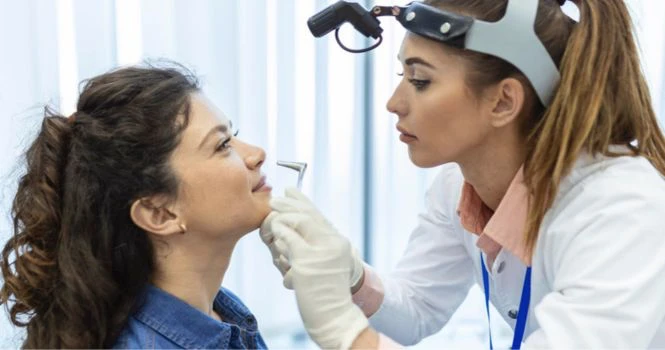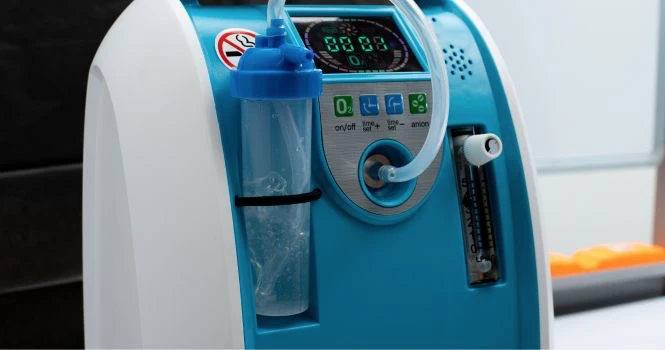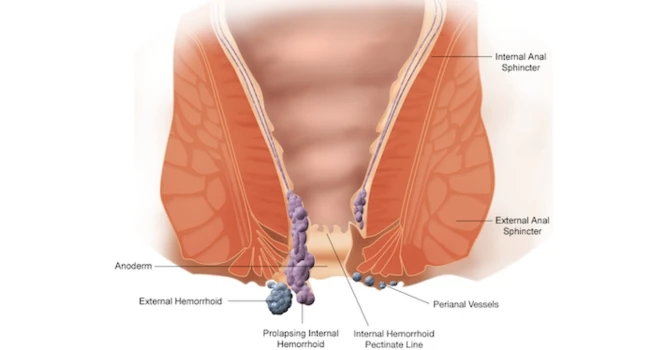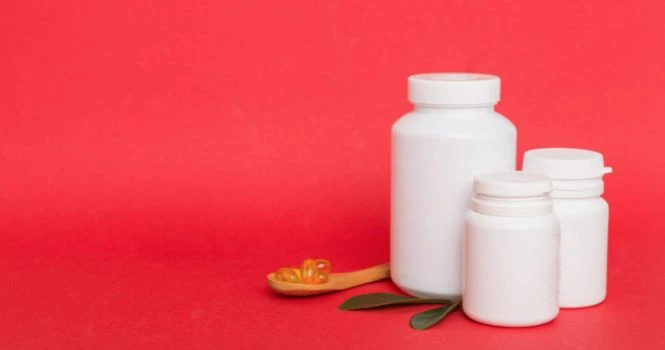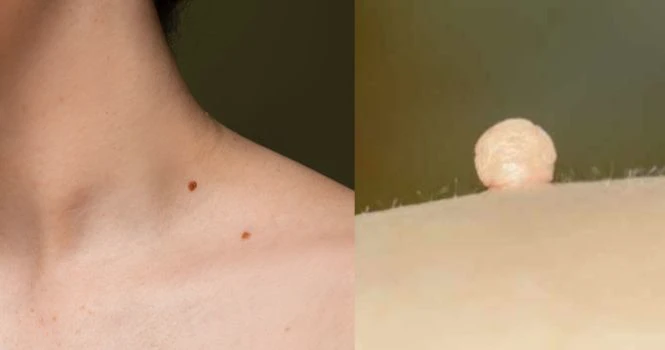What is Oxygen Saturation or SpO2
What is Oxygen Saturation?
Oxygen Saturation, also called SpO2 is the measure of how much Oxygen is being carried by the Blood.
Hemoglobin has a high affinity for Oxygen. Blood contains Red Blood Corpuscles or RBC’s and these RBC’s have hemoglobin, which has 4 binding sites on its structure. When these 4 binding sites on hemoglobin carry oxygen, then it is said to be saturated.
How is Oxygen Saturation Measured?
It is measured by placing a Pulse oximeter on the tip of the finger.

How does Oxygen from the air reach the blood?
We breathe in air from our surroundings and the air around us contains around 21% of oxygen.
Composition of Atmospheric Air
➡️ Oxygen 20.84 %
➡️ Carbon Dioxide 0.04 %
➡️ Nitrogen 78.62 %
➡️ Water Vapour 0.5 %
And when this air enters our lungs along with oxygen, exchange of gases takes place in the alveoli of the lungs, oxygen enters the blood and carbon dioxide moves out.
The oxygen which enters the blood is circulated all over the body through the arteries, we measure how much oxygen is in the blood with the Finger Pulse Oximeter.
What are normal oxygen saturation levels?
Normal oxygen saturation of the arterial blood is 95% to 100%.
A healthy individual with normal lungs, breathing air at sea level will have an Arterial Oxygen Saturation of 95% to 100%.
If the altitude increases, then the oxygen saturation drops and is demonstrated by David Blaine in his youtube video Ascension, where he flies 25,000 feet above the sea level with balloons and you can see how high altitudes decrease oxygen saturation.
Pulse Oximter is an important non-invasive tool to measure oxygen saturation at home and clinics , as an early identification tool of low oxygen saturation before being clinically evident.
It can also be measured on the tip of the earlobe with a different probe. We have commonly seen the Finger Pulse oximeter.
What are the symptoms of low oxygen saturation or low SpO2 levels?
Symptoms of low oxygen saturation levels
➡️ Anxiety
➡️ Confusion
➡️ Restlessness
➡️ Headache
➡️ Shortness of breath
➡️ Dizziness.
Pulse oximeter or Pulse ox , as is commonly called, is a very handy non-invasive tool to measure oxygen saturation at home.
When patients are well saturated, their tongue and lips appear pink, when unsaturated they appear blue.
Cyanosis is a bluish discoloration of the skin, mucous membranes, tongue and lips. Clinically it is not evident, unless the oxygen saturation is 90% or lower.
This Pulse Oximeter is a useful non-invasive device to detect before its clinically evident.
Common causes of Low oxygen saturation are,
▶︎ Anemia
▶︎ Asthma
▶︎ Congenital Heart Defects in Children
▶︎ Congenital Heart Defects in Adults
▶︎ COPD-Worsening of Symptoms
▶︎ Emphysema
▶︎ Interstitial Lung Disease
▶︎ Medications
▶︎ Pneumonia
▶︎ Collapsed Lung
▶︎ Excess fluid in the Lungs
▶︎ Blood clot in artery in Lung
▶︎ Pulmonary Fibrosis
▶︎ Sleep Apnea
Some of you with the above conditions will have oxygen saturation below 95% and still function normally. Talk to your doctor about your Baseline Oxygen saturation.
Low Oxygen Saturation in COVID-19
If it’s 94% or oxygen saturation of 93% or below that, then inform your Healthcare provider and follow their instructions on the next steps to take .It helps to avoid unnecessary ER visits and helps to assess the severity of infection, before it could be detected clinically.
Home medical devices like oximeters and oxygen concentrators are crucial for respiratory emergencies.
What causes Oxygen Saturation to Drop? | Can oxygen levels go down without symptoms? What is Happy Hypoxia or Silent Hypoxia?
At Home, we are measuring the arterial oxygen saturation by the Finger Pulse oximeter, and we know the normal range is 95% to 100%. In People with pre existing Lung or heart condition, the baseline oxygen saturation might be 94% or lower and still function normally. It’s important to know your baseline oxygen saturation .
Other than that, in a previously normal individual ,
If it’s showing 94% or lower, then the probable causes could be due to
▶ COVID-19 Pneumonia
▶ Cardiac causes
▶ Respiratory causes
And other question which is commonly asked is,
Does Oxygen saturation drop during pulmonary embolism?
Pulmonary embolism is when a circulating clot in the blood gets lodged in one of the blood vessels in the lung. which blocks the flow of blood thereby causing drop in oxygen saturation.
Pulmonary Embolism is a Medical Emergency.
If you have one or more of these symptoms it is important that you seek medical treatment immediately.
➡ A sharp pain in your back or chest
➡ Suddenly feeling out of breath
➡ A very fast heart rate
➡ Coughing up blood
➡ Fainting or feeling light-headed
➡ Swelling, redness or pain in one of your legs
➡ Fever accompanied by a sharp chest pain or sudden breathlessness
Is it possible that the oxygen levels can go down without symptoms?
Yes and the patient wouldn’t feel breathless but if we check the oxygen saturation then it would be LOW. Also called Happy Hypoxia. And it’s one of the reason we are losing patients as by the time the patient reports to the doctor / hospital , the condition would have gotten worse,
So how do we deal with Silent Hypoxia or Happy Hypoxia?
While the cause is being researched, what we can do is , Whenever the patient is having flu-like symptoms, while you are checking the SpO2 with Pulse oximeter, even a slightest feeling of Unpleasant breathing, which is a subjective symptom, meaning , which can only be recognised by the patient, then consult your doctor.
Remember, early recognition and diagnosis are proving to be very important for the life to be saved in COVID-19.
Let’s know the correct way to check the SpO2 levels by Finger Pulse oximeter
How to measure Oxygen Saturation by Pulse Oximetry?
In the above video, you can see how to check your SpO2 levels at home, using Finger Pulse Oximeter.
Step 1: Make sure the battery are charged
Step 2 : Switch on the Pulse Oximeter
Step 3 : Choose the finger, which fits well, not too tight or loose, as shown in the video, the one which fits correctly without hindering the blood flow.
Step 4
- Make sure your Your finger is clean and dry
- No pigmentation or nail polish on your finger
- Check indoors as too much light can interfere with the results.
Step 5 : After you insert the finger , don’t not move your finger or the pulse oximeter , stay still, until it displays the readings.
Step 6 : Note the SpO2 Readings in Percentage .
Normal Oxygen Saturation is in the range of 95% to 100 %
Abnormal Oxygen Saturation is below 95% .
Consult your Healthcare provider , if you have reading is 94% or below , with or without symptoms , They would guide accordingly.
How Does Pulse Oximeter Work?
It measures how much Hemoglobin in the red blood cells is carrying oxygen.
Hemoglobin with oxygen is called Oxyhemoglobin
Hemoglobin without Oxygen is called Deoxy Hemoglobin.
We know the Normal Range is 95% to 100%.
From one end of the Pulse Oximeter, It emits pulses of red light and infrared Light .
You can see the red light but not be able to see the infrared light as it’s in the invisible spectrum.
On the other end, is the light detector which detects the light reaching it, after passing through the finger.
The finger has both arterial Blood as well as venous blood and The Pulse oximeter only analyses the arterial blood and the only pulsating thing in the finger is the arterial blood , and calculates it as,
Oxyhemoglobin absorbs more infrared light than red light
Deoxy Hemoglobin absorbs more red-light than infrared light.
All this information is fed into algorithms in a microprocessor to measure the oxyhemoglobin saturation and then readings are displayed.
Now that we know how this works, we would now relate how nail polish and excessive ambient light affects the readings.
Factors that may reduce the accuracy of pulse oximeter signals include:
➡️ Nail Polish
➡️ Pigmentation of the skin
➡️ High-intensity ambient lighting
➡️ Excessive patient movement, or motion artifacts
➡️ Decreased perfusion
➡️ Presence of abnormal hemoglobin, carboxyhemoglobin
➡️ Intravascular dyes
➡️ Reduced accuracy with saturations below 83%
Sources
https://www.ncbi.nlm.nih.gov/books/NB…
https://www.ncbi.nlm.nih.gov/pmc/arti…
Pulse Oximeter Image Thinkpaul / CC BY-SA (https://creativecommons.org/licenses/…):
https://www.ncbi.nlm.nih.gov/books/NB…
Photo by Polina Tankilevitch from Pexels
https://www.ncbi.nlm.nih.gov/pmc/arti…
Pulse Oximeter Image Thinkpaul / CC BY-SA (https://creativecommons.org/licenses/.
![]()



